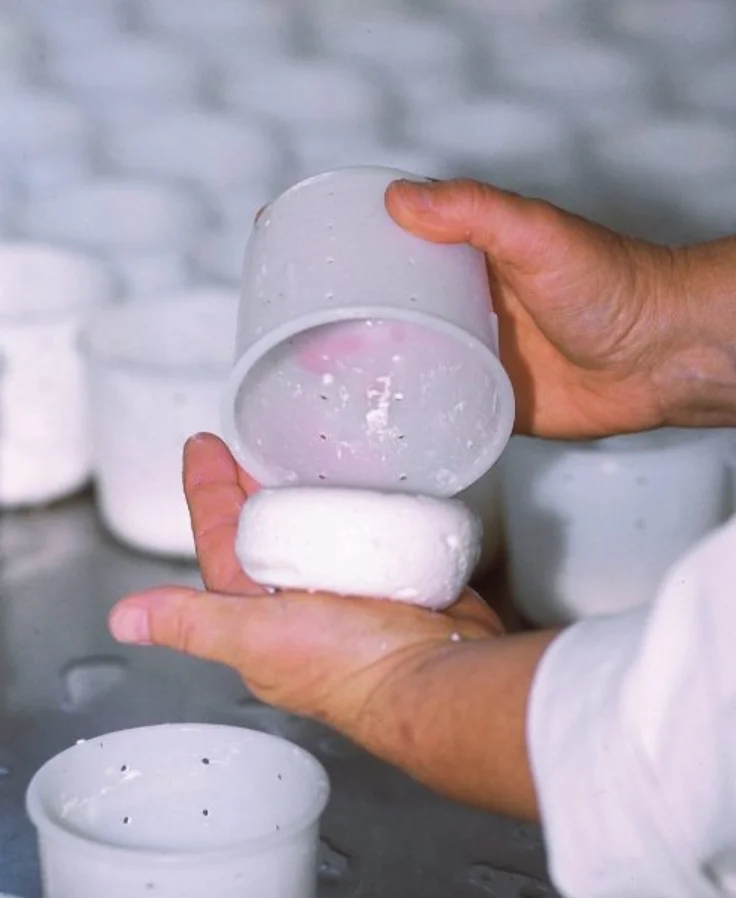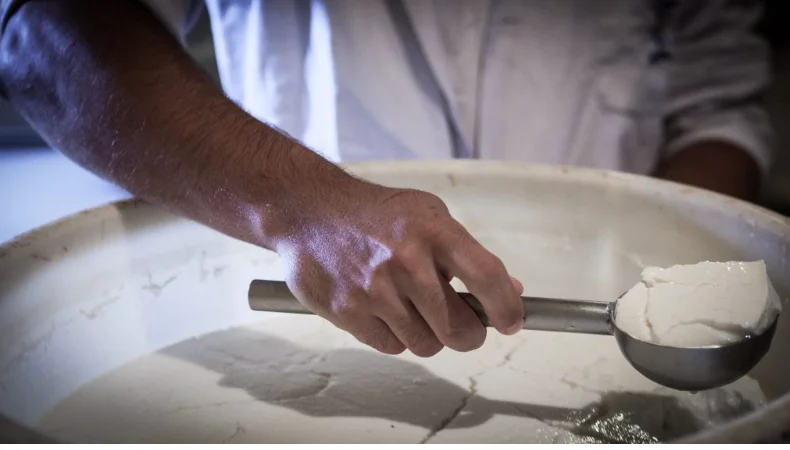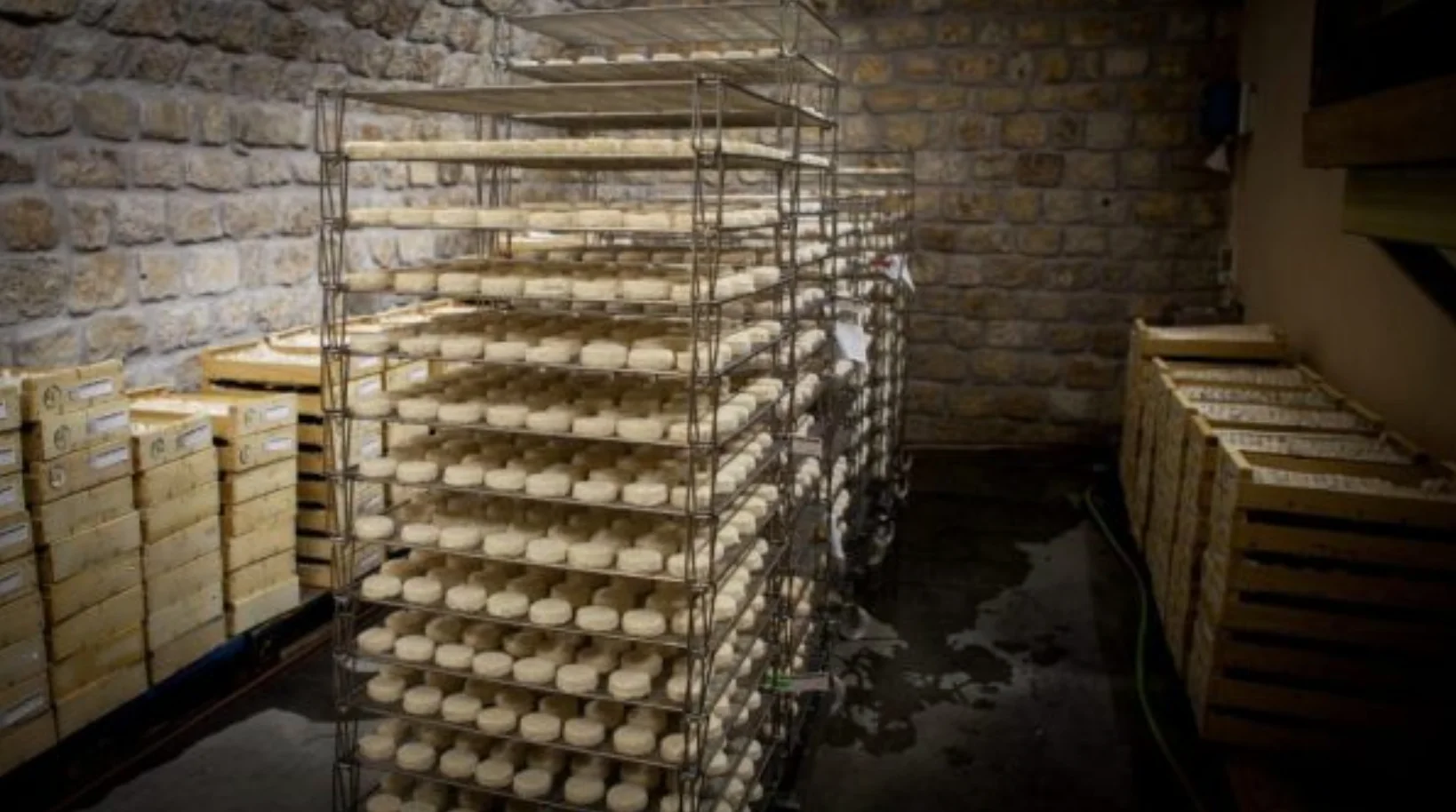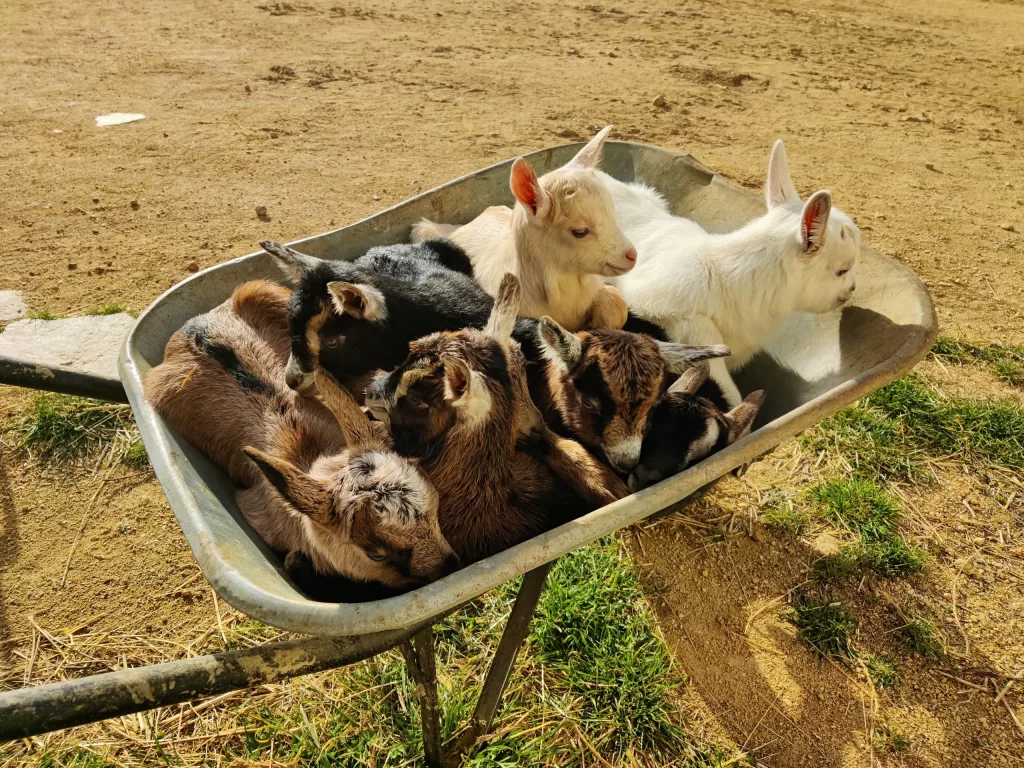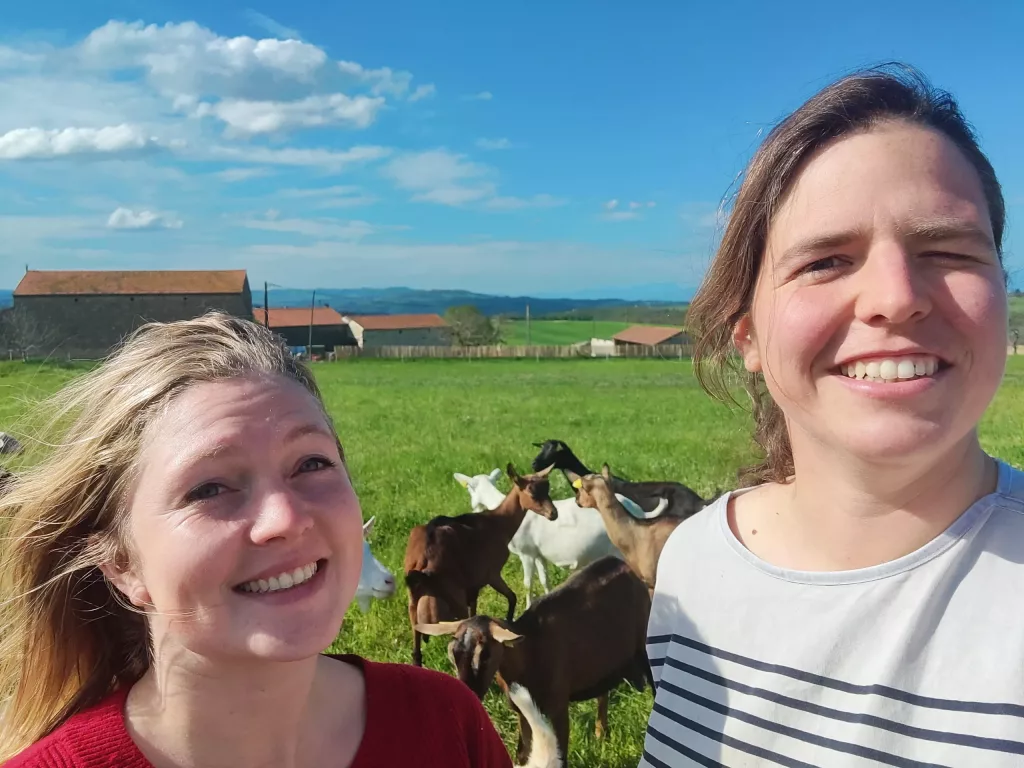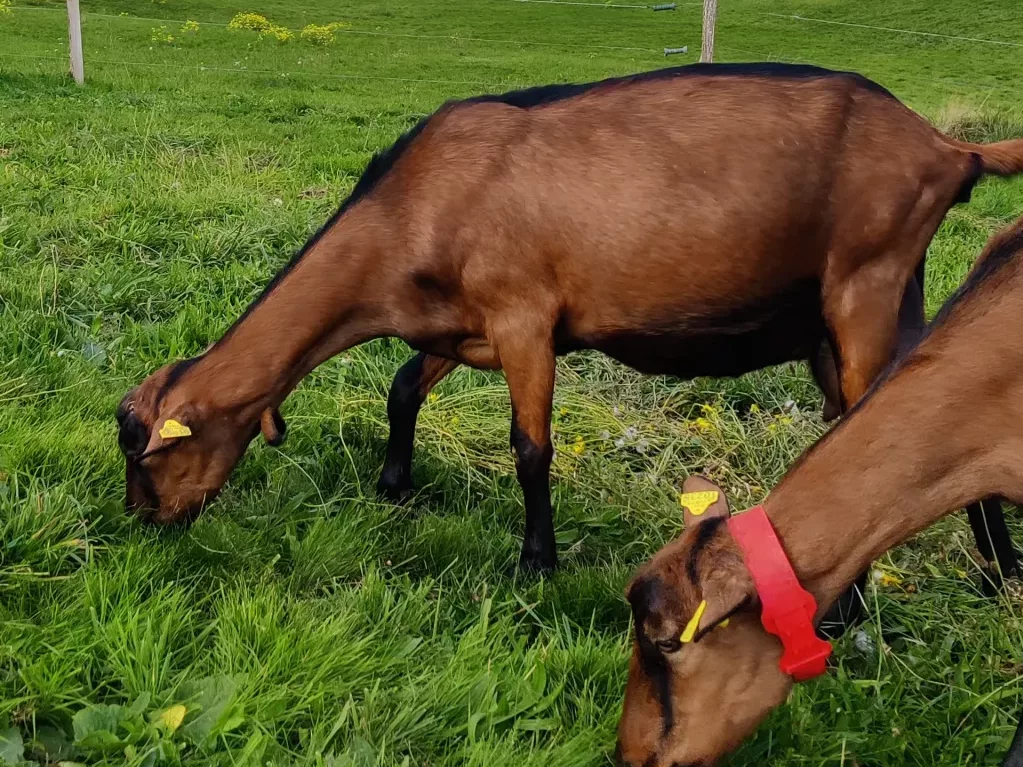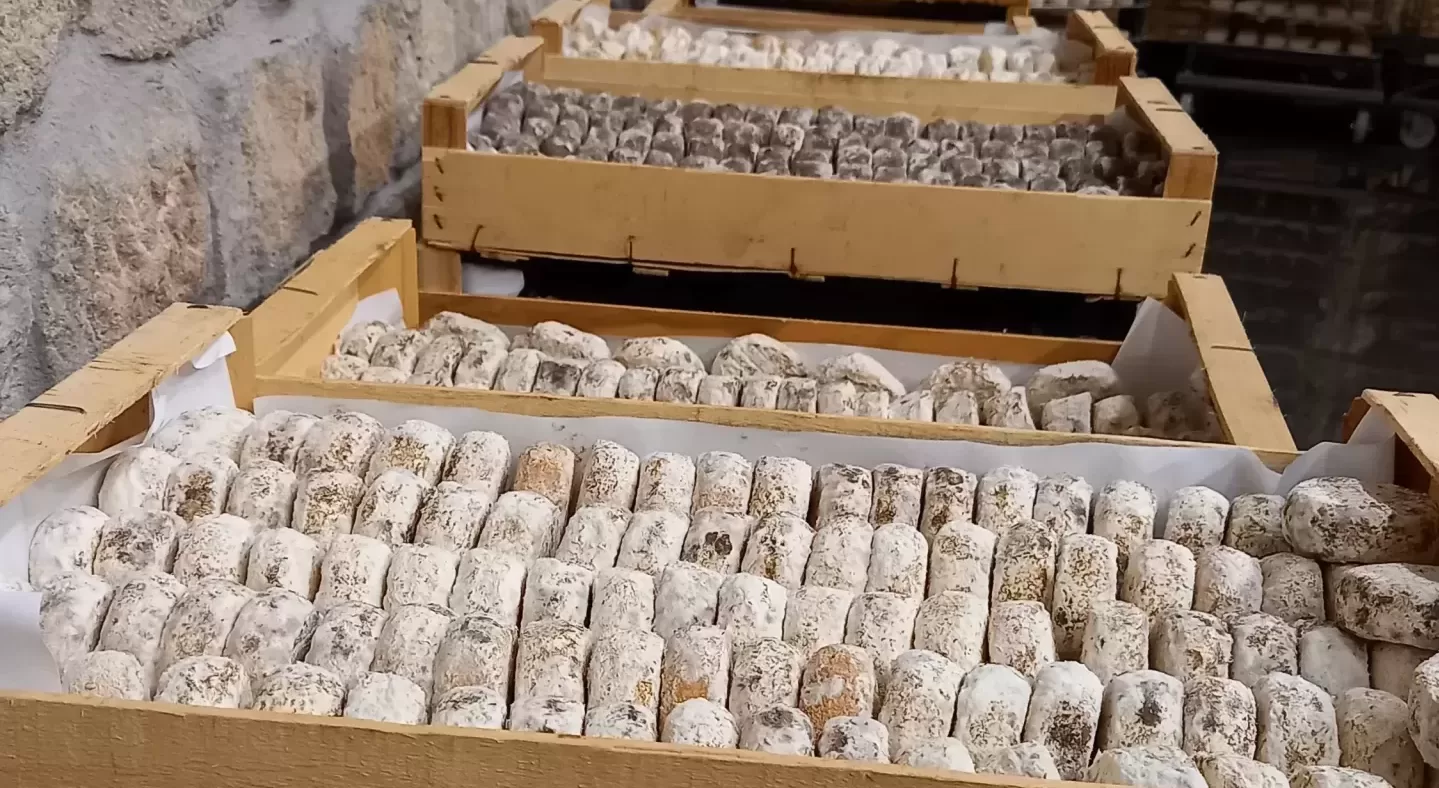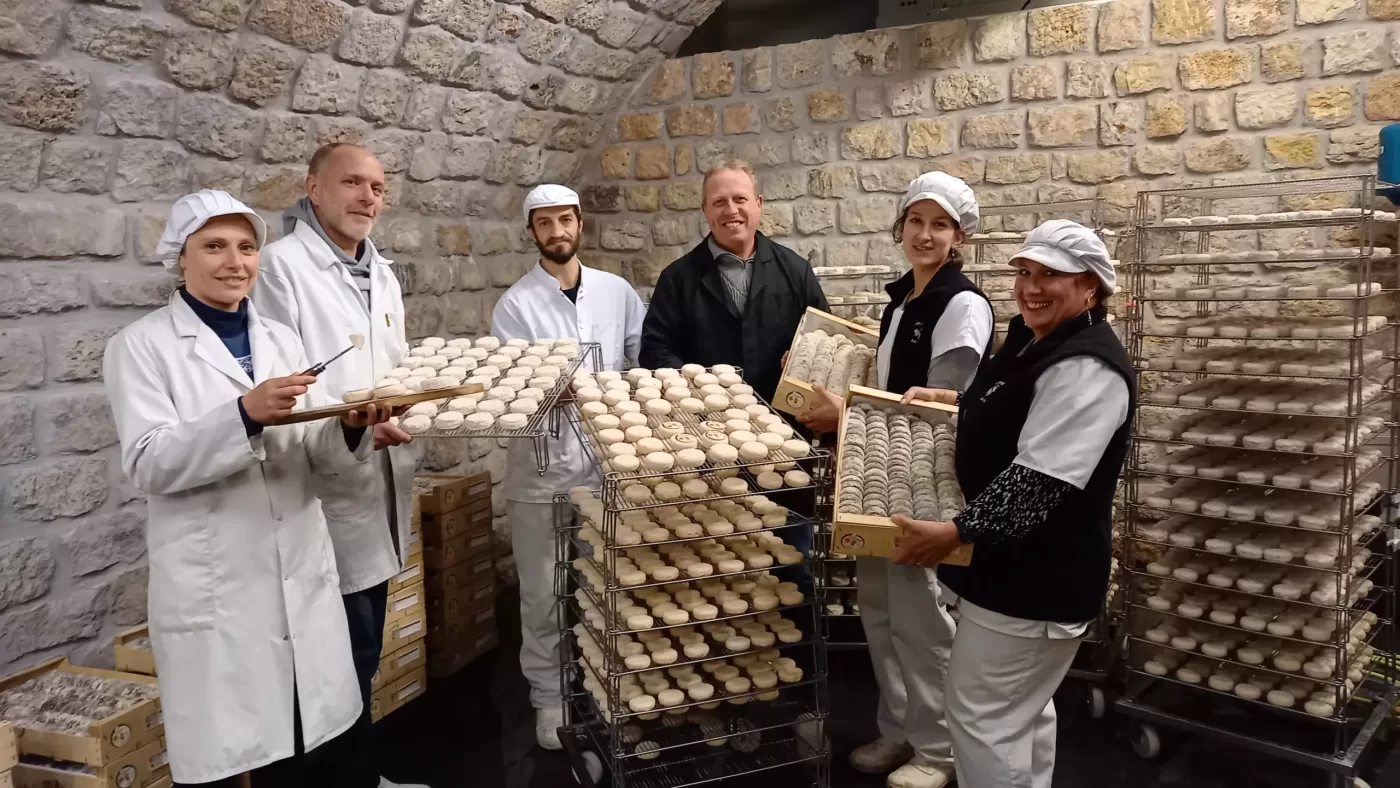Picodon: The wonder of Fromage – unveiling one French cheese at a time

France is home to hundreds of different goat cheeses, 15 of which boast an AOP designation. But amidst all of these choices, the small but mighty Picodon stands out: for its diminutive size, for its piquant flavor, but perhaps most of all for its variety. A cheese whose aromas, intensity, and even color can vary widely from producer to producer, Picodon is as diverse as the mountainous landscapes of the Drôme and Ardèche where it is produced.
Picodons made across the region are nevertheless united by a few commonalities: The cheese must be made with raw milk, and unlike other goat cheeses, it will never become creamy.
“That’s what distinguishes it, for example, from Rocamadour or Pélardon,” explains Simon Bouchet, a representative of the syndicat of AOP Picodon. “It’s a cheese that’s fairly firm. It can be soft, but it will never be runny.”
This, Bouchet explains, is a characteristic born of Picodon’s mountainous origins. Indeed, the regions where Picodon is produced are fairly isolated. Compounded with the innate seasonality imposed by the physiognomy of goats, who do not give milk out of their natural lactation cycle unless forced to do so with hormones or special lighting, the circumstances of production led Picodon to become as rugged and persevering as the people who produce it, both for the ease of its transport to market towns like Montélimar and Valence as for the possibility of keeping it through the long, cold winters.
But perhaps the most essential characteristic defining Picodon is evident in the cheese’s very name. Derived from the Occitan picaoudou, which means “the little thing that stings a bit,” Picodon always boasts a certain oomph.
“There are organoleptic characteristics that are defined in the cahier des charges,” says Bouchet. “It must be a cheese with character, so with a caprine flavor, a fairly frank goatiness.”
A Varied Terroir, a Diverse Cheese

Picodon is made in the southern French départements of Ardèche and Drôme, as well as in the cantons of Barjac and Valréas. Each of these different areas has a distinct topography, imparting its unique terroir on the cheese.
“There are as many Picodons as there are days in the year,” explains Olivier Moyersoen, an ager at Les Fromages Fermiers du Peytot.
That said, there are a few governing trends. In southern Drôme, explains Bouchet, Picodon will often be sold younger, somewhere between 12 days and three weeks, and usually boasts a white rind, a sure sign of the presence of the Geotrichum fungi instrumental in forming the bloomy rinds of Camembert and Brie. In the mountainous Ardèche, meanwhile, cheeses tend to be drier, with a mottled blue rind stemming from the presence of Penicillium, a mold familiar to lovers of the pretty blue veining common to blue cheeses like Roquefort.
“They’ll lend very, very different flavors to the products,” explains Bouchet, who notes that the mountain peaks shielding certain regions from ocean breezes help cultivate the delicate blue spores; in the plains, the fresh sea air makes it impossible for the mold to develop naturally.
“Those will be the major differences,” says Bouchet, who notes, nevertheless, that each producer’s cheese will be different.
“Since it’s raw milk, everything that can be found in the cheese – the goat feed, the cheesemaker’s hand – each cheese will have different flavor and textural characteristics.”
Léa Bruguier & Mylène Massaudet – Caprices du Petit Chère
Léa Bruguier and Mylène Massaudet have been making Picodon at their Caprices du Petit Chère, in Ardèche, since the spring of 2022. They met while working on a different Picodon farm in the Drôme, not far from Tournon-sur-Rhône.
“We said to ourselves, being an employee is fine for a bit, but we want to start our own business,” explains Bruguier. “We’re very attached to our Ardèche, and we wanted to make something that represents Ardèche.”
Today, the two women divide their tasks equitably: Bruguier is the cheesemaker, while Massaudet raises the goats. Each starts her day at around 6:30 or 7 am: Massaudet feeds the animals and Bruguier unmolds last night’s cheeses and salts them. By 8 am, it’s time for Massaudet to begin the morning milking, while Bruguier begins molding the curd that has been forming for the last 24 hours.
“She’s got 450 cheeses to mold by hand, with a ladle,” explains Massaudet. “It’s… quite a few!”
When the goats have been milked and the cheeses formed, there’s a host of other tasks to undertake: putting the herd out to pasture, mending fences, manning the store, filling orders. In the afternoon, Massaudet has another feeding and milking to do, while Bruguier has cheeses to turn and to transfer: to the drying room, to the aging cellar, to the fridge.
Their goal, they say, is to craft a cheese that remains mild for as long as possible, albeit with the character inborn in all Picodon.
“It needs to have flavor,” says Bruguier, “It shouldn’t be bland. There’d be no point. But it shouldn’t be strong right off the bat, to keep it accessible for people who don’t like strong cheese, so that they can eat two-week-old Picodon without a problem.”
Karine Mourier Duvignaud
Karine Mourier Duvignaud, meanwhile, is looking for a wholly different flavor for the Picodons she makes with her husband on the Ardèche farm they inherited from his grandparents in 2005. A native of Burgundy, it was important to Mourier Duvignaud to maintain the rural tradition that she was raised in – something that, for her, is uniquely protected by the presence of an AOP.
“For us, the AOP is something that’s very important,” says Mourier Duvignaud, who has been president of the syndicat for AOP Picodon since 2019. “It defends country traditions and allows them to live.”
The diversity allowed within the AOP, however, is primordial; she refutes the idea that the label implies uniformity.
“My Picodon isn’t my neighbor’s Picodon,” she asserts. As for what makes hers stand out?
“We’re very blue.”
According to Karine, the blue-grey rind of her Picodon, while traditional in her region, makes it a tougher sell to non-locals.
“Whenever you see Picodon outside of our region, it’s always the Geotrichum ones,” she says. “But we’re very attached to our penicillium Picodons.”
That said, she’s noticed a rising trend in demand for bluer Picodons among outsiders – including Parisians. To wit: At this year’s Fête des Fromages AOP, a yearly event that reunites all 51 dairy AOPs of France in Paris for a long weekend of tasting and discovery, Picodon proved to be the third-best seller, trailing Alpine Beaufort and Basque pressed Ossau-Iraty.
“When we had people taste the stronger ones, they were surprised,” she says. “But at the end of the day, they liked it!”
It was different, she says, to the Picodons typically sold in Paris, but at the end of the day, “that’s the point.”
“I think these are limits we put on ourselves,” she says. “And we need to push past these roadblocks we set for ourselves. People like the piquancy, and the strength, and the character.”
A Unique Aging Method
Strength and character are even more sought-after by a very specific aging method dubbed méthode Dieulefit, so named for the village in the heart of the mountainous Drôme where it was first cultivated. Here, Picodon was traditionally washed of its natural blue rind to reveal the soft interior, at which point it was transferred to clay jars for a softer final product that boasts a much longer shelf life.
“I think it’s the only AOP cheese where there’s a different aging method that’s defined by the cahier des charges,” says Bouchet.
Hervé Barnier – Ferme de Pracoutel
Hervé Barnier of the Ferme de Pracoutel in Vesc is one of the rare producteurs fermiers still making cheese in this way, though not, he shares immediately, the only one.
“Let me correct you straight away!” he says. “I am not the only one. I’m one of the rare ones to do it, but not the only one. There are two of us – me and my neighbor.”
And if we’re being precise, it’s not Barnier, but his wife Hélène, who carries out the required steps inborn in this method.
“I inherited the kingdom, as she says,” he laughs, “but I’m more on the production side for hay, grains, animal husbandry, and milking. She does the cheese side and the aging.”
Her cheeses require two months of aging before they’re even washed for the first time, and after multiple washings, they’re aged up to five months further – and sometimes more.
Dieulefit Picodons represent only about 1 percent of their small production, and according to Barnier, they rarely leave the region.
“There are people who know it, locals, and then there are people who come to the farm,” he explains, but given the lack of standardization and the stronger flavor of the cheese, “they’re often really meant for people who are looking for them.”
But for Barnier, despite the low demand and low yields, it’s essential to continue producing cheese in this ancestral way.
“First of all, gastronomically, it’s interesting,” he says. Washing the cheese gives it an even more pronounced character and flavor than iterations with a blue rind, and it also encourages the development of a wholly unique texture.
“It becomes very soft inside, completely uniform, and it cuts like butter,” he says. “And there’s a multitude, a panoply of extraordinary flavors.”
But it’s not just because it’s delicious that the Barniers persist in cultivating this local heritage.
“Historically, that’s what Picodon was, to our parents, our grandparents,” he says. “It’ll never be widely distributed, I think. But it deserves to exist. It’s kind of our heritage.”
A Community-Driven Heritage
In addition to producteurs fermiers like Barnier, Bruguier, Massaudet, and Mourier Duvignaud, Picodon is produced by six dairies that transform the milk of local farmers; some even age using the Dieulefit method, which is what makes this unique product just that slightest bit more accessible outside of the region. While this sort of production laitière is often denigrated among cheese lovers as being less artisanal, according to Bouchet, such separation of animal husbandry and cheesemaking is actually an important historic element of Picodon production.
“There are whole areas, in northern Ardèche, for example, where you almost only get producteurs laitiers,” he explains. “These are areas that are fairly difficult to access, where if there was no AOP, there would be no more milk production at all.”
Les Fromages Fermiers du Peytot
Les Fromages Fermiers du Peytot is not a producteur laitier, but this ager in southern Ardèche also seeks to make the lives of small local producers easier by concentrating one essential element of cheesemaking in one central location.
“We’re in the heart of the Cévennes d’Ardèche, where the roads are more tortuous, where farms are not enormous,” explains Moyersoen, whose father founded the company in the ‘80s. “And so collecting milk to make cheese was not possible here.”
Instead, he explains, this cellar is dedicated to the aging and marketing of Picodon made by 15 different farmers in the area.
The now 70-year-old patriarch Christian is still an active part of the business, but, the younger Moyersoen recounts, in 2007, “as he saw time moving forward, and despite the fact that his children were part of the company, he asked himself: ‘How can we be sure that this lasts?’”
It was then that a decision was made to transform the company into a collective, owned half by the farmers themselves and half by the 15-or-so employees who work on-site.
Moyersoen prides himself on sustaining the diversity of Picodon: young and old, blue and white.
His favorites, he says, are those with a touch of blue on their surface.
“When you age it a bit longer, it’ll take on aromas of underbrush, flavors of hazelnut,” says Moyersoen, “and then it’ll leave a bit of piquancy on the tongue that will allow you to associate it with all of the richness of the wines we produce in our area as well.”
Nevertheless, he says, each and every example of this cheese has its merits.
“It’s often said that Picodon strongly resembles the area where it’s made,” he says. “Ardèche and the Drôme are areas that are very welcoming, so that could be the softness and welcoming character of a Picodon, but in both départements, when it rains, it pours. When it’s hot, it bakes. When we’re in the mountains of the Drôme, the mountains of Ardèche, when it snows, it snows abundantly. And Picodon is the same: It can be a bit harsh, a bit piquant, a bit strong.”
To understand it best, he says, one needs only three things: “a board, a knife, and a few people to taste it with.”
Are you familiar with Picodon? Is it one of your favourites? Please share your views in the comments section below.
Image credits
all images copyright the respective Picodon producers Here you can read all articles in this column: ‘The wonder of Fromage – unveiling one French cheese at a time’ by Emily Monaco


